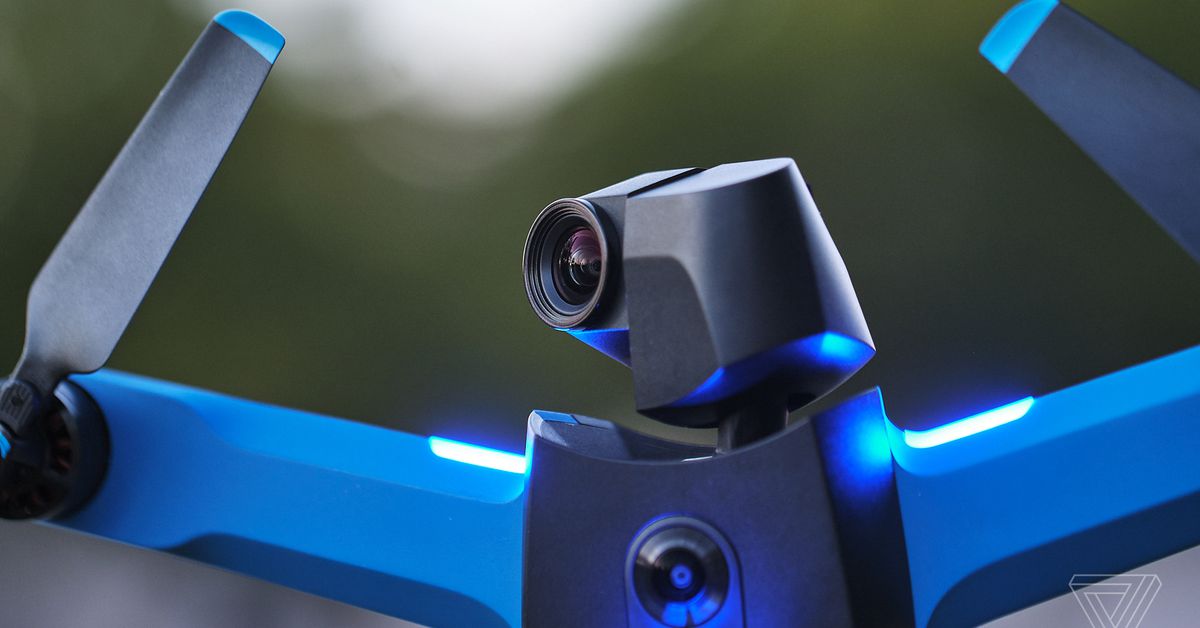/cdn.vox-cdn.com/uploads/chorus_asset/file/19249721/vpavic_190930_3698_0021.jpg)
Skydio is done making drones for consumers. Though the self-flying drone startup has been denying for years it would pivot to enterprise, it confirmed on Thursday that it’s sunsetting its consumer business in favor of creating drones for use by commercial businesses and the public sector.
Skydio began shifting its focus toward government and military use in 2020 with the launch of its self-flying X2 model. In an interview with The Verge at the time, Skydio CEO Adam Bry said that the company had more consumer-facing drones on the way. The only consumer drone it’s released since was a minor hardware update to the Skydio 2 that addressed some big shortcomings.
“Our drones are making the core industries that our civilization runs on — public safety, transportation, energy, construction, and defense — safer and more efficient,” Skydio CEO Adam Bry writes. “The impact we’re having with our enterprise and public sector customers has become so compelling that it demands nothing less than our full focus and attention.”
We’ve followed Skydio practically since the beginning, when it was a tiny startup led by three friends who met at MIT, which raised $3 million to produce the first drones that could truly fly themselves while dodging obstacles on the way. The initial $2,500 Skydio R1 fulfilled the previously broken promises of follow-me drones like Lily by legitimately being able to dodge trees while filming you around a park — as long as their branches weren’t too small. And while the $999 Skydio 2 arguably wasn’t competitive with DJI as a photographer or cinematographer’s drone, a three-year-old can fly it around:
But what grew the company wasn’t its consumer drones, which were (at least initially) hand-assembled in pricey Redwood City, California. It was the US government’s decision to blacklist Chinese drones amidst increasing demand from enterprise and military customers, which first shot Skydio to a $1 billion valuation in 2021, and over $2.2 billion as of this year. These days, the company shares a parking lot with GoPro.
Skydio’s been at the forefront of an explosion in industry and law enforcement use of drones not just because it’s one of the few systems that can reliably fly itself, but because it’s US-made, and because Skydio’s worked to help its customers secure Beyond Visual Line of Sight (BVLOS) waivers so they can actually fly those drones without a physical person watching them every step of the way. (A visual observer is required by law in some countries, including the United States, the UK, and across the European Union.)
Last December, Skydio revealed its 72-pound motorized dock to let companies and agencies remotely control, charge, and protect their drones without a nearby human, too:
You can actually see on the web where the Chula Vista, CA police department autonomously flies its Skydio drones. The company also announced that it received a nationwide BVLOS authorization in Japan, though it wasn’t quite as impressive as Skydio hinted. Japanese companies and agencies can’t just buy Skydio drones and fly them unseen; the company confirmed to The Verge that each needs to get approval from Japan’s regulator using a template Skydio can provide.
Skydio’s not the only drone-in-a-box company that’s gotten drones approved for BVLOS flight, nor the only one to get the US government’s nod, mind you. And the blacklist on Chinese companies like DJI was a bit overblown — it wasn’t anywhere near a complete ban and many agencies still use DJI last I checked.
As part of the consumer shutdown, Skydio will no longer sell its Skydio 2 Plus Starter, Sports, Cinema, or Pro kids. It says it will still provide customer support for people who currently own Skydio drones while also honoring any warranties. The company says it will also maintain an inventory of accessories, such as replacement batteries, propellers, and charging cables “for as long as we can.”
In a FAQ page posted to its website, Skydio responds to a question asking whether it will make another drone for consumers, stating “we are not able to share any updates about our future product roadmap.” For now, Skydio will only sell the Skydio 2+ Enterprise kit. The company recently partnered with the US Agency for International Development to utilize the Skydio 2+ drones to document war crimes in Ukraine.
If you did purchase a consumer Skydio 2 drone years ago, it’s not like it was just abandoned after the company shipped it. Skydio did release some pretty cool new features, including a way to 3D scan your surroundings (companies are using it for inspections), program a robotic cameraman, perform sweeping gimbal rolls and generate panoramas.
Personally — this is Sean talking — I’m sad that we’ll never get a Skydio Mini that I can fold down into a bag the way I do with my DJI. I’ve always wanted a tiny folding drone that can follow me around, I’ve asked CEO Adam Bry in every interview, but I guess it’s not happening. Drones are getting boring, like my colleague Vjeran recently pointed out, and Skydio had the power to change that.
Services Marketplace – Listings, Bookings & Reviews
